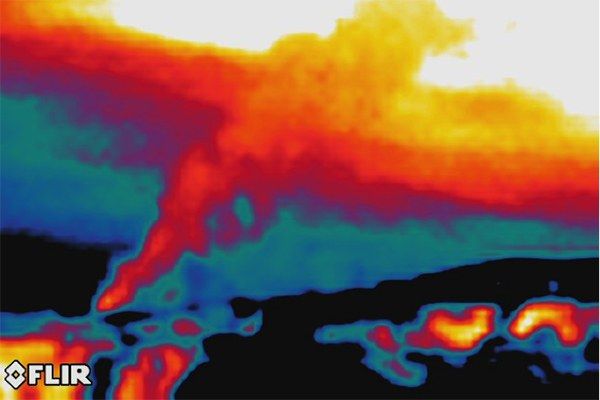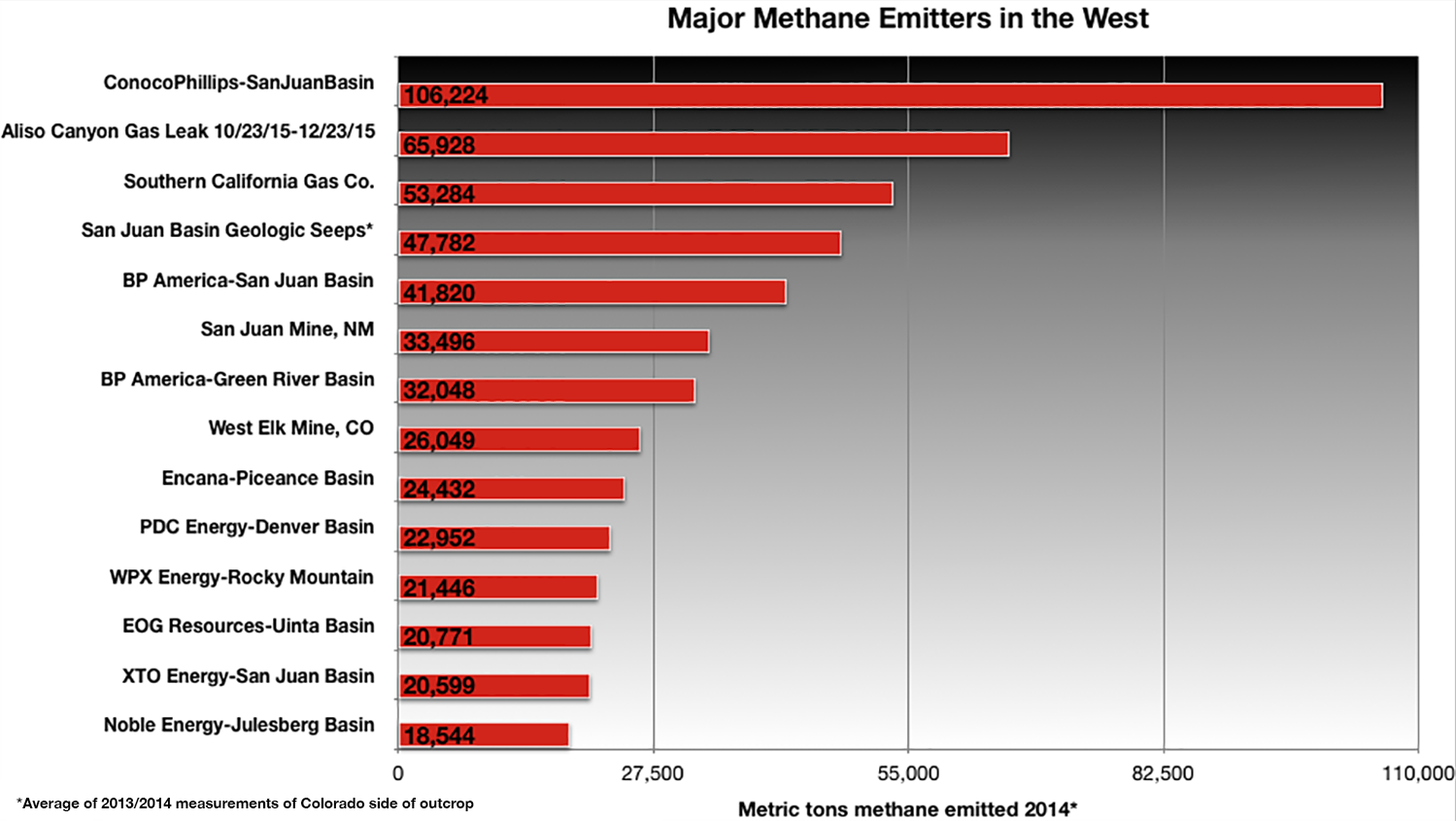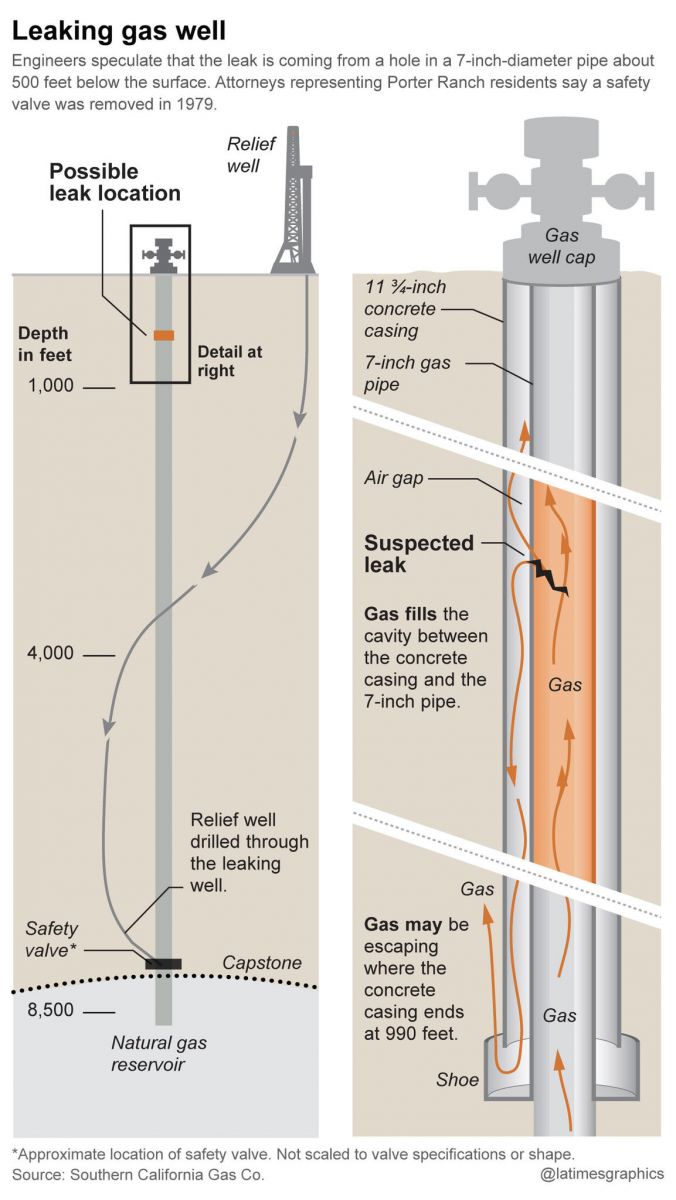
A SPECIAL REPORT ON THE SoCalGAS NATURAL GAS LEAK AT ALISO CANYON
GreenMedInfo Research Group
California Faces Its Greatest Manmade Environmental Catastrophe of the
Third Millennium
Remarkable Parallels to the BP Gulf Oil Spill
The ongoing natural gas leak at Aliso Canyon, California is no ordinary leak.
The Aliso Canyon gas leak (also called Porter Ranch gas leak) is a massive, uncontrolled, ongoing leak from a natural gas well connected to the Aliso Canyon underground storage facility near Porter Ranch, Los Angeles, California since October 23, 2015. The second largest gas storage facility of its kind in the United States belongs to the Southern California Gas Company, a subsidiary of Sempra Energy. On January 6, 2016, Governor Jerry Brown issued a state of emergency.[1]
Just like the BP Gulf oil spill, this disaster has made the nation aware that gas leaks are far more common than otherwise known.
In fact, natural gas leakage is expected for a high percentage of fracking and other drilling sites. It’s actually unavoidable in some circumstances because of the various technologies and techniques which are used to extract natural gas around the USA.
Each natural gas drilling or fracking context presents its own unique set of challenges. Some are very difficult, some are quite easy and there are a lot in between. The more challenging the drilling or fracking operation the greater the likelihood that things will go wrong. Things going wrong in the drilling business is an accepted fact of life and not really considered problematic. This is why gas leakage is simply considered a part of the process, as well as an environmental cost of doing business.
This predicament is quite similar to what the BP Gulf oil spill was responsible for making the public grimly aware of — that oil leaks in the Gulf of Mexico (GOM) are actually quite common and occurring all the time. Undersea oil wells can be breached in a number of ways, even after they have been capped. Once they spring a leak, they can release hydrocarbon effluent for years on end without being noticed. They are rarely, if ever, reported by drillers since they are out of sight, out of mind. Who, after all, is going to happen upon a leaking well that is say 3500 feet under water in the GOM?
Now consider how easy it is for the Oil & Gas Industry to accidentally fail or purposely neglect to report natural gas leaks from their active and inactive operations. They can come and go without so much as an iota of evidence left behind. When attempting to determine whether any given well has been leaking methane, the only thing that can be done is to monitor it in real time. The volume of gas leaked can then be ascertained through a variety of methods.
In reality, massive methane emissions are now a highly tolerated “cost of doing business” industrywide. Despite the fact that methane is considered the most powerful greenhouse gas (GHG), there is very little regulation or enforcement in this regard. Corporate oversight is even more lax as the inordinate push to make the USA completely energy independent has consistently overridden safety concerns and environmental damage.
The following chart clearly illustrates by company the methane emissions due to industrial operations during 2014. It should be noted that since the well blowout at Aliso Canyon, the methane output has made that site the largest methane producer in the country. The leak has also put the state of California on the global methane map in a major way ………….
Aliso Canyon: What’s the back story?
With all this background information it must be stated that the SoCalGas leak at Aliso Canyon had nothing to do with recent fracking or drilling operations. Rather, this leak is coming from an old gas well that is over 8500 feet deep. The other relevant details are as follows:
The source of the leak is a metal pipe in a breached 7-inch casing of injection well SS 25 that is 8,750 feet deep. The field can hold 86 billion cubic feet of natural gas and is the second largest storage facility of its kind in the United States. Well SS 25 had been drilled in 1953 and was initially provided with a safety valve. The safety valve was removed in 1979 as it was old and leaking. Because the well was not considered “critical, that is, one within 100 feet of a road or a park, or within 300 feet of a home”, the valve was only removed and not replaced. The atmospheric scientist Steve Conley said the wellhead in Aliso Canyon was 61 years old and implied it was no “shock that it failed”.[1]
What is crucial to understand about the currently out-of-control leak under management by the Southern California Gas Company (aka SoCalGas) is that it is directly connected to “field that can hold 86 billion cubic feet of natural gas”. Various researchers, including the GreenMedInfo Research Group, have been attempting to verify the vulnerability of the 2nd largest storage facility of its kind to this intractable leak. Heretofore, we have been unsuccessful in confirming this critical issue.
So, the real question is how did this leak develop into the worst of its kind in American history? The facts of this case have literally been leaking out into the public since the blown well first began releasing natural gas on Oct. 23rd. The initial response from SoCalGas was predictably defensive and dissembling at first as they had every reason to know exactly where the leaking gas was coming from. Instead of full disclosure on the matter, SoCalGas led the residents of upscale Porter Ranch to believe that everything was okay, even going so far as to go “from home to home to home, giving everybody the A-OK and […] didn’t admit to having a gas leak until … probably around the 28th of October”.[1]
The company knew all along that they had a major gas leak on their hands and that, once the news got out, there would be only one alternative for those living near ground zero—EVACUATION. This is exactly what thousands of families have been forced to do, over 2800 households to date. There are another 6500 plus families still in process. When is the last time that 10,000 households were relocated for any type of manmade disaster?! That’s how bad a single natural gas leak can be.
That it took almost two and a half months to officially declare an emergency is also quite suspect in the eyes of many. Governor Jerry Brown’s sister sits on the board of Sempra Energy, the parent company of SoCalGas There is much speculation throughout the LA area that the catastrophe was deliberately hushed up because of the sheer enormity and severity of the problem. SoCalGas has known about this well gone bad for many years and deliberately chose to take the path of least resistance at every juncture.
In light of the fact that there was prior knowledge of faulty and inadequate equipment at the site, SoCalGas currently has legal exposure and financial liability that far exceed anything ever experienced by an American utility. Depending on how long it takes for a durable repair to be made, that liability will only grow with each passing day. Every week that families are kept out of their homes puts extraordinary pressure on both the utility and the government. Hence, a permanent resolution must be found quickly lest the state be sued for negligent oversight and regulatory violations. Both of these are clearly evident from the evidence that has been made available.
What was the exact cause of the leak?
Last fall, a 7-inch injection well pipe ruptured 500 feet below the surface of Los Angeles, after ferrying natural gas for six decades.[2]
The preceding diagram clearly delineates the suspected cause of the leak. Because the natural gas is escaping continuously at a point that is 990 feet underground, the best alternative was to drill a relief well beyond that depth. That relief well is being drilled at a depth of almost 8500 feet in order to cut off the flow of natural gas just above the natural gas reservoir. Because this reservoir is the largest of it type in the western U.S., it holds a volume of gas that will leak uninterruptedly for an inordinate period of time.
Again, just like the BP oil spill, the SoCalGas gas leak was caused by the Perfect Storm. In both cases it was a series of human errors and corporate neglect together with aging infrastructure which conspired to trigger the leak. SoCalGas clearly did what many energy companies do: they “operate to failure”. BP was famous for this company policy whereby undersea oil drilling operations were conducted under extremely risky circumstances.
Similarly, the old well known as Standard Sesnon 25 in Aliso Canyon, which was drilled in 1953, also showed definite signs of leakage in 1992. Rather than take all the necessary precautions SoCalGas did quite the opposite, even though “they could hear the leak through bore hole microphones”. In other words a 25-year-old leak was treated as though it didn’t even exist. Continuing to conduct the operations as usual in such a dangerous situation is what is referred to in the business as “operating to failure”.
Hence, it is the standard operating procedures themselves which give rise to these periodic oil spills and gas leaks. The Oil & Gas Industry has been given cover by the U.S. Government over many decades. All of the involved regulatory agencies are staffed with former industry officials just as federal bureaucrats often go to work for the energy companies. The incestuous relationship has only gotten more so with each passing year as the checks and balances are inevitably eroded.
CONTINUE READING THIS ARTICLE HERE:



